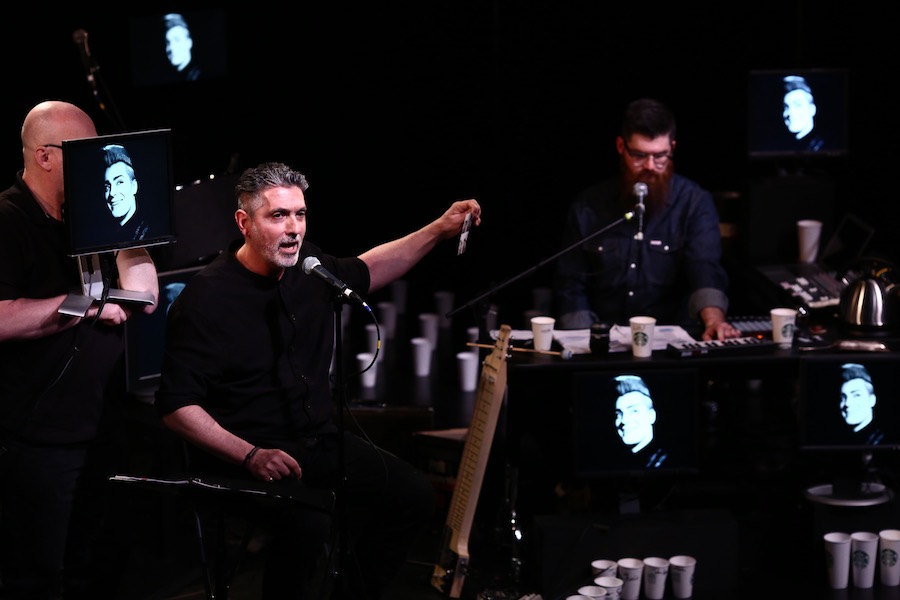
Chad Herzog | Dixwell | Downtown | Economic Development | Fair Haven | International Festival of Arts & Ideas | Arts & Culture | The Hill
A quantum physicist and artist presenting together, on what it means to translate equations into work that anyone can understand. A twice-over deconstruction of Sgt. Pepper’s Lonely Hearts Club Band in time for its 50th birthday celebration. The hip-swinging, foot-stomping bands Las Cafeteras and Flor de Toloache. The youngest headlining artist that the New Haven Green has ever seen, and a zeroed in focus on residents of the city.
From June 9 to 23, all of these will unfold as part of the 23rd annual International Festival of Arts & Ideas, a citywide celebration of theater, visual and culinary art, music, walking tours, panels, talks and more. Thursday night, Festival Co-Directors Tom Griggs, Liz Fisher and Chad Herzog unveiled the 2018 lineup in a launch party at Gateway Community College.
“This is why we festival,” said festival co-director Chad Herzog. He added that it’s now a transitive verb—to “festival” is “to come together to celebrate our neighborhoods, our families, our friends. To challenge our thinking, open our hearts, and feed our souls.”
In advance of the announcement, the Arts Paper had a chance to sit down with Herzog and discuss programming decisions, the Festival's new co-leadership structure, and ongoing budget woes as Connecticut navigates a financial crisis. Selections from that interview are below.
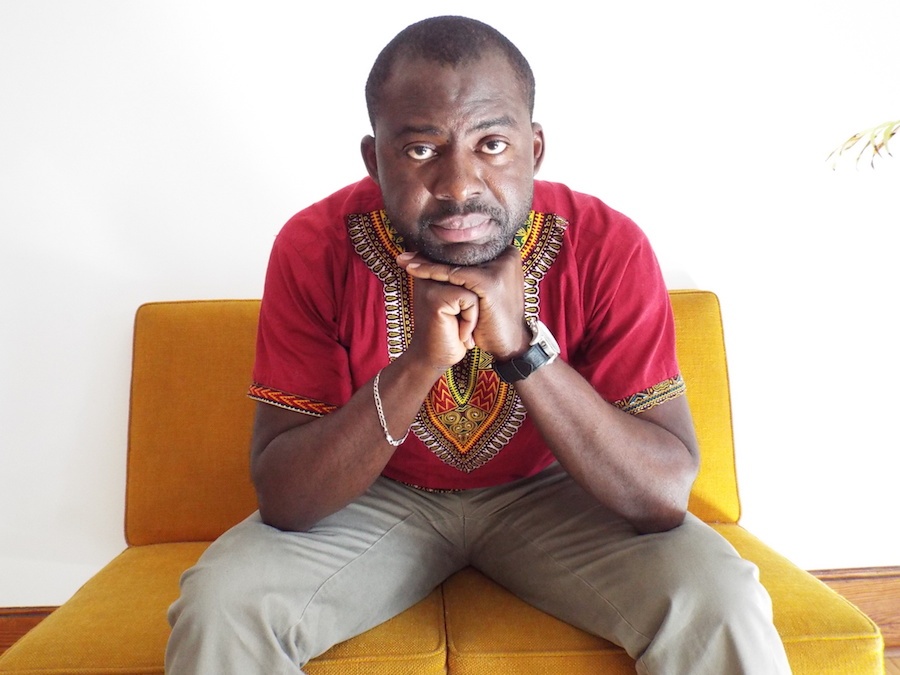 Toto Kisaku. Rays Kisaku Photo.
Toto Kisaku. Rays Kisaku Photo.
Let’s start by talking about the international-but-local tilt of the festival this year. Requiem for an Electric Chair, for instance, is utterly international in scope—but it’s also by Toto Kisaku, a refugee who just won asylum, and calls New Haven home.
Well, when we think of international—it’s that international awareness, international perspective, international voice. As citizens of this city, if we are not aware what’s going on 2,000 miles away, 10,000 miles away, then we’re not being very good citizens.
I'm not one to throw out themes. But two years ago when I started working on this festival, [we had] the idea of what it meant to be a citizen today, minus that government-issued ID card. That doesn’t matter to me as much as what it means to be a citizen in our neighborhoods, in our communities, in our workplaces, in our region, in our place.
Toto is so much a part of this community today. But the story he’s telling is that of not that of our community— or the community that we may know right now. His work is so relevant for the Congo, but what’s scary for me is depending on how the next couple years go, his work and Ain’s work [referring to Ain Gordon, who is presenting Radicals in Miniature] … we could find ourselves in the same boat.
Those are works that do question our current state. Works that question our leaders. I’m not talking about New Haven, but bigger—as we get into this country and this world. And that’s where the ‘international’ really becomes more prevalent in the festival. We need to know it.
But that was way before you could have known about the current administration. People say to curators: "Oh, you must have known." I know people said it to James Bundy after An Enemy of the People last year.
Yeah. I’ve been working on this festival for three years. I had no idea.
+--+high+res.jpg) Kaki King, who will be performing her work The Neck is a Bridge To The Body on June 20. Photo courtesy of International Festival of Arts & Ideas.
Kaki King, who will be performing her work The Neck is a Bridge To The Body on June 20. Photo courtesy of International Festival of Arts & Ideas.
So where does that globe-crossing sweet spot come from?
I think that it comes from the history of the Festival … and probably the history of people that have been at the Festival. We do put ourselves out there. Three years ago when I started thinking about this festival, it was not only the work that was being made at the time, but what was going to be made in the next couple years out.
Would I have guessed three years ago that this country would be in the place that it is? Hell no. No even in my wildest dreams. Not even two years ago. So sometimes as curators—I’ve heard people say we get lucky at the way things line up.
What would this festival have looked like with a different person running the country? It might have looked a lot different, it might not have. Who knows where we are?
Certainly, when this festival came together, it was before we knew Claudia Rankine’s Citizen: An American Lyric would be our big read book. It was before we knew that [Donald] Trump would be president. It was before we knew that Connecticut would be seeing the financial troubles that the state would be seeing.
Let’s talk about that (the festival has been reeling since its line item in the state budget was slashed two years ago). People come to Connecticut all the time saying it’s a blue state. And it’s not really anymore. I’d give it purple.
I came to Connecticut thinking: “I’m moving to a wealthy state, I’m moving to a progressive state.” Well, there is definite wealth in much of Connecticut, and we don’t get to see that. As a festival as a whole, we are very lucky that individual donors have stepped up to continue to make our festival happen. Just as we are very lucky that state funding has continued for us, and the city has continued to support us.
But corporate dollars are hard to get! Being in a city like New Haven, there are so many nonprofits that are competing for the same dollars. All of us have a tremendous story to tell and all of us deserve those movies. What happens? How do you sustain?
It’s not the festival it was 23 years ago, when it first started. Hearing our founders talk about what it was like 20 years ago, or 10 years ago, or even five years ago—things have changed quite a bit. And I like to think that we’re nimble enough to react to what’s going on in our city. I’d like to think that the programming that’s happening this year is still relevant to what’s going on.
But I’ll tell you—if I had started our Ideas programming 18 months ago, what we’d be talking about in June would have nothing to do with where we are today.
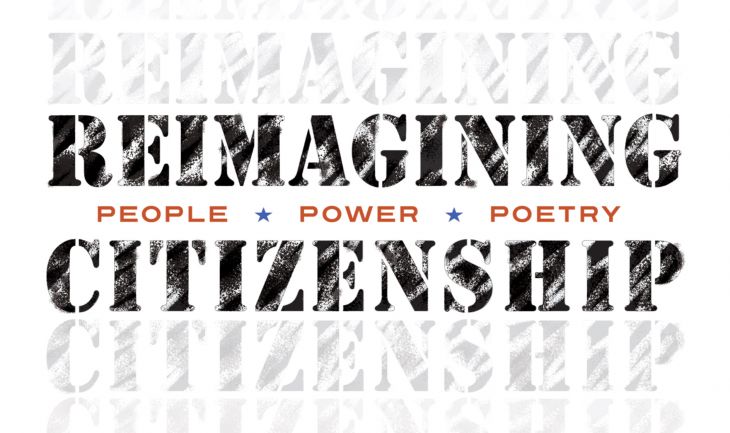
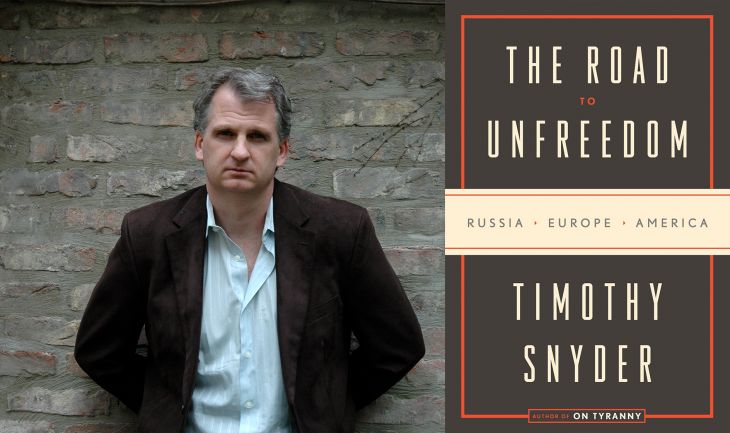
You mentioned that that timeline wasn’t the case a year ago—that it was planned farther out. Was the change motivated by how fast current events and politics are moving?
Well, when I arrived at the Festival, I arrived with a lot more people doing the work. So that's part of it.
For me, I have a running file of people that I want to have conversations with. At times, it has a couple hundred people. As I was starting to think about building the Ideas program last year, and throughout the summer and the fall, I had a hard time making an argument for what I was originally thinking.
Between Black Lives Matter, The #MeToo movement, social and economic changes in this country, political unrest in this country, and what it’s doing for us as citizens of New Haven, of Connecticut, of the United States and of the world—it really starts to make you question things.
And so the Ideas program did come together later than I wanted it to. It may feel, to some, very hyper-local. That’s not by accident. I think the diverse number of voices being heard are there. And we’re doing some new things too.
Like our first Ideas conversation. It’s moderated by Kyle Pederson of Connecticut Mental Health Center (CMHC) Foundation. He’s a force! He’s moderating with Mindy Fullilove and her colleagues at University of Orange. In conversations with Kyle and Mindy, we’ve talked about having these … essentially Ideas speakers in residence. They’ll be back next year at the Festival, and in 2020 to continue the conversation.
It’s like we’ve done with artists in residence, where we have this longstanding relationship with some artists. We’re seeing that again with Mark Morris this year, and Pepperland. The same goes of Toto, and Kaki King. Not only are we presenting her work, The Neck is a Bridge To The Body, but we’ve also signed on to commission her newest piece, which maybe won’t premiere until 2020.
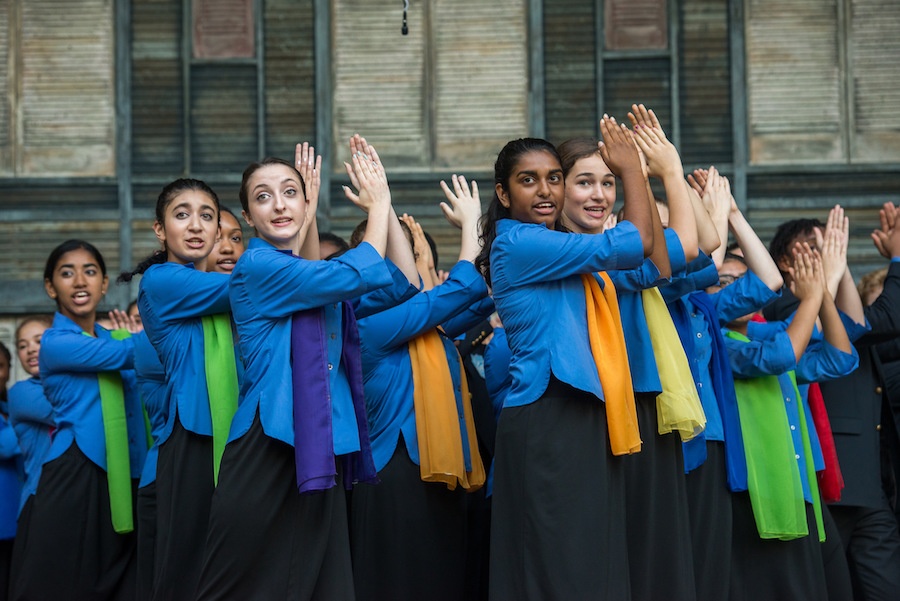 The Young People’s Chorus of New York City® and Yale Choral Artists will premiere The Glass Box a new work by Paola Prestini, composed for both ensembles, on June 16. Photo courtesy International Festival of Arts & Ideas.
The Young People’s Chorus of New York City® and Yale Choral Artists will premiere The Glass Box a new work by Paola Prestini, composed for both ensembles, on June 16. Photo courtesy International Festival of Arts & Ideas.
There’s a lot there that I want to ask about. I know that two years ago, in 2016, the Festival brought The Strange Undoing of Prudencia Heart (Pru) to GPSCY in March, to make the Festival seem more like a year-round thing. Where is the thought on that now?
Well, it was more about what happened after that Festival. I was brought here with a Festival budget that was $2.5 million more than it is today, right?
It’s very hard in April to get people excited about a June festival, and then [after that Festival] we don’t talk to people again until the following April or something. So we were able to do Pru that March. The following fall we brought the Projects in Situ piece to continue that. Last spring we had this “Global Sounds” program that we were able to continue with, and it’s really been about riding the numbers and keeping the Festival financially sound.
Moving forward, my hope and dream —speaking as Chad, not specifically one of the co-organizers of the Festival—is that we’ll be able to find ways that the Festival is relevant throughout the year. Whether that be presenting works that wouldn’t otherwise be represented in the city, or other theatrical or dance pieces—we have a nice cultural drought in the dance area—how can we find ways to be relevant?
It’s been a year of formal transition, with a leadership structure that you basically beta-tested last summer. But we’ve gotta talk about the fact that it’s three white people leading this international festival that prides itself on diversity.
It’s something that I think about every day. I was given a privilege at birth that friends of mine, colleagues of mine, neighbors of mine were not born with. It’s a privilege that it took me a while to recognize—but a privilege that through recognition and through self-reflection and work, I’ve realized that I can’t give up, but I can use to make sure that I bring people along with me.
I’ve been allowed to sit at a table that many people have not. I’ve been invited to conversations, to jobs, to convenings—to sit at these tables. Have I always been the right voice there? Probably not. Have I always been the best voice there? Probably not. But I was given this invitation.
The way that I’ve made sure I’ve tried to use that invitation is that I’ve been able to bring people with me. And so, while I've never once tried to put myself in somebody else’s shoes, because I’ve realized that I can’t do that, I’ve tried to listen and I’ve tried to make sure that the voices are coming along. That I, as having this privilege, can go to friends, colleagues, neighbors, and say ‘What can I do?’
It’s making sure that the work that I do tries to share the stories, the representation of everyone else in as many people as I can. But knowing that I can’t tell that story for that person.
One of my goals is that every Board member and every staff member will participate in Undoing Racism. In order for us as white people to even begin to try to understand things, we need to be going through training. And this is a training that we should all be part of.
Since we’re going in that direction, I noticed that the neighborhood festivals are very different this year. Let’s talk about that.
Well, it’s because of the neighborhoods. Last June … we brought the neighborhood festivals, the “pop-up festivals” as we called them, together for a convening where we spent time working with them to evaluate their success. When I say working with them to evaluate their success, they worked to develop rubrics so they could evaluate their own success. Because it’s their festivals.
This one-day session was totally inspiring. We were reflecting on five years of festivals that the neighborhoods had been making. We learned then that it was the first time that the neighborhoods that had ever come together as Dixwell, Fair Haven, and The Hill to talk about them.
At the end of the meeting, when we were talking about next steps, one of the first things said was “can we do this again?” So we brought everybody back together in October for their next meeting. And it was during that meeting that somebody said, “We’ve been around for five years. We’re not popping up anymore. Can we drop the name ‘Pop Up?’”
It made total sense. A short while later, somebody said: “Since we’re here to stay, is there some way we can bring the best of our festivals to the Green on one of the days that the Festival is on the Green?”
So June 9 is our “Celebrate New Haven” day on the New Haven Green. It’s where we celebrate neighborhood festivals. They’re bringing the best of their festivals to the Green, with main stage entertainment on the headlining stage all afternoon. They'll have all the things that make their festivals special, from bike safety to a climbing wall to arts and crafts ... to the Readmobile.
Everything that has made what we knew as a "pop up" festival great in Dixwell or Fair Haven or The Hill will come to the Green and be a New Haven festival. All the way up to the evening performance on the Green—the Cool Breeze Jazz guys (Elan Trotman and Rohn Lawerence are joined by The Rahsaan Langley Project).
And my hands are off. How do we have more ways to have this community programming this Festival? To have the community know that we’re listening. I hope that this is one of those ways. Just as Altar’d Spaces started last year and is continuing this year.
So that program (Altar’d Spaces), which collaborates with the churches on the Green, launched last year. This year, it includes classical music, Latin jazz and reggae, spoken word, and samba among others. What lessons are you taking from last year?
I think we learned a lot with Altar’d Spaces last year. Not every kind of performance works great in those four spaces. We were throwing stuff against the wall last year. It’s curated by the churches, so artists submit their work to the Festival, we put that all together, the Festival and the four churches meet, we put that all together and we meet and select the artists that they would like to be part of the program. So the relationship really is between the artist, the church, and the Festival.
What was great about watching that come together this year is what we all learned—and what the leaders of the churches learned. What works in their space, what doesn’t. Or while it might not work in their space, they know that something else would work in one of the other spaces. You won’t see dance this year, because dance is really hard to see when you’re sitting on a flat surface without an elevated stage.
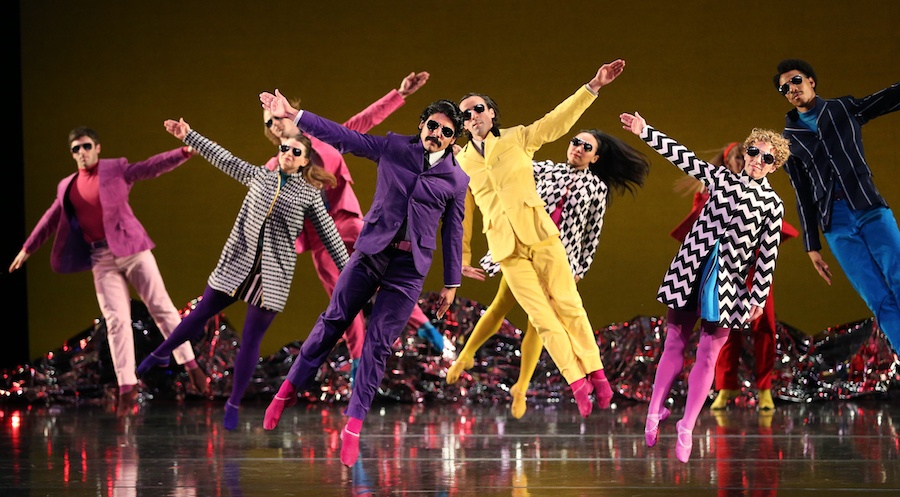 Pepperland when it premiered last year in Liverpool. Photo courtesy of International Festival of Arts & Ideas.
Pepperland when it premiered last year in Liverpool. Photo courtesy of International Festival of Arts & Ideas.
Speaking of dance, that’s where I wanted to go next. You used this term earlier—a “dance drought.”
Yeah. As a multidisciplinary festival, we need to make sure all disciplines are being presented. The hard part for me is that I’ve always thought of this festival as having a lot more room for dance. When the funding cuts happened, we had to cut some dance out of the program.
This year we have Mark Morris Dance Group coming back. This is their fourth trip back to New Haven. It’s a company that New Haven has really gotten to know, and has come out to support. When we learned about Pepperland—Mark being invited by the city of Liverpool to create this piece commemorating the Beatles’ Sgt. Pepper’s Lonely Hearts Club Band—it felt like a pretty natural piece for us to be having in New Haven.
Do we get to check off our dance card because we have Mark coming in? No. I would have loved to be able to bring in a lot more dance. The struggle that we have as a two-and-a-half week festival is enough time and enough space to present dance. We don’t have a lot of spaces that dance works in. It starts to get pretty expensive.
But it’s something that I would love to see us as a city do more of. Because we as a city don’t do a lot of dance, we have a pretty big audience we have to build for dance. So this is where the balancing act gets tricky.
This year feels very theater-heavy to me. If we did that much dance, we would be sinking the ship.
I wanted to ask about Pepperland specifically. You know, I saw it on the A&I website, and I was like ‘meh.’ There’s so much cultural nostalgia that probably plays a role in a piece like this, but I kind of feel like I’m over it.
Well, I think one thing people probably need to understand is they’re not going to hear a Beatles cover band playing the music. This is the music that has been re-envisioned by Ethan Iverson and by Mark Morris.
So there’s strong nostalgia. This is an album that changed people’s life. We have those people who were changed by this music, who grew up in the 1960s and 70s who remember it like it was yesterday. The interesting thing that I’ve found in talking about the Beatles and talking about this piece is the number of young people that are excited about it. And the only thing I can attribute that to is the push that Apple made when it released the Beatles’ album on iTunes and Apple Music.
You know, when it premiered last year in May in Liverpool, people thought they were going to see a rock concert. Instead, they got to see the way that Mark Morris was influenced, that Ethan Iverson was influenced, that the dance community was influenced by the music of the Beatles in the 60s.
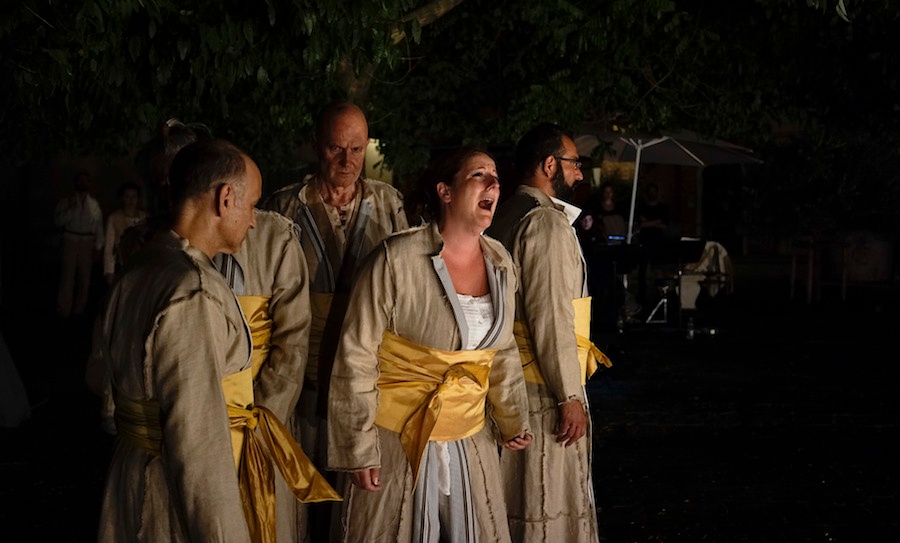 Andrea Messana Photo, Courtesy International Festival of Arts & Ideas.
Andrea Messana Photo, Courtesy International Festival of Arts & Ideas.
There are some things coming back to the festival, like site-specific performances. Tell me more about Compagnia de' Colombari’s Merchant of Venice.
For three years—since I arrived in New Haven—people have been telling me about this thing the festival once did, which was a courtyard series. The last time the festival attempted to do this was 2012, and it never went off because it rained all festival.
But people had these great memories from these courtyard concerts. People have told me what it means to sit really close to somebody that you may or may not know in an intimate setting and have the world come alive for you through arts and culture. And so for us to be able to do a Merchant of Venice unlike any anyone has seen before in the Yale Law School courtyard, where it seems most appropriate, is most exciting to me.
Director Karin Coonrod … she’s made Shakespeare in particular finally seem relevant to me. In this Merchant of Venice, there are five different people that play Shylock. That’s because she sees a little bit of Shylock in all of us. Within the five Shylocks, there’s a male Shylock, a female Shylock, a Black Shylock, a white Shylock, a Muslim Shylock, a Jewish Shylock, a Christian Shylock. When I talk about it like that, there are more than five, but that’s how people are made up.
 A still from Radicals in Miniature . Photo courtesy of International Festival of Arts & Ideas.
A still from Radicals in Miniature . Photo courtesy of International Festival of Arts & Ideas.
You mentioned theater-heaviness.
I’m really excited to be bringing Ain Gordon to the Festival. When I was able to see Radicals in Miniature last year, I knew that we needed to figure out a way to get it to New Haven. This is a piece that tells the stories that have been forgotten. The stories of those that we should know very well but have forgotten because of things like the AIDS epidemic or other life changes that have allowed them to fall out of Google search history.
I feel lucky to be able to premiere Toto Kisaku’s first piece, Requiem for an Electric Chair, in the United States. His story—it probably reads better as theater than it does in real life, because none of us can ever imagine in happening. At least none of us where we live.
To watch Toto develop as an artist, to find a home here in Connecticut, to seek and receive political asylum, and to share his story that is so powerful—a story that we could all be very close to depending on how things go.
And then to welcome a group like A Billion Nights On Earth. Thaddeus Phillips—his theater just blows me away. This piece, it’s truly a piece that we can all relate to. We’ve all been a kid. And it’s a piece that whether we have kids or know a kid, there’s no reason why we shouldn’t think about bringing them to this performance.
It’s a beautiful story about a father and son and their relationship. A story about how we need to listen to our kids and remember that the dreams that they’re in, we should want to join. It’s truly that piece that is for the 3 to 103 year old.
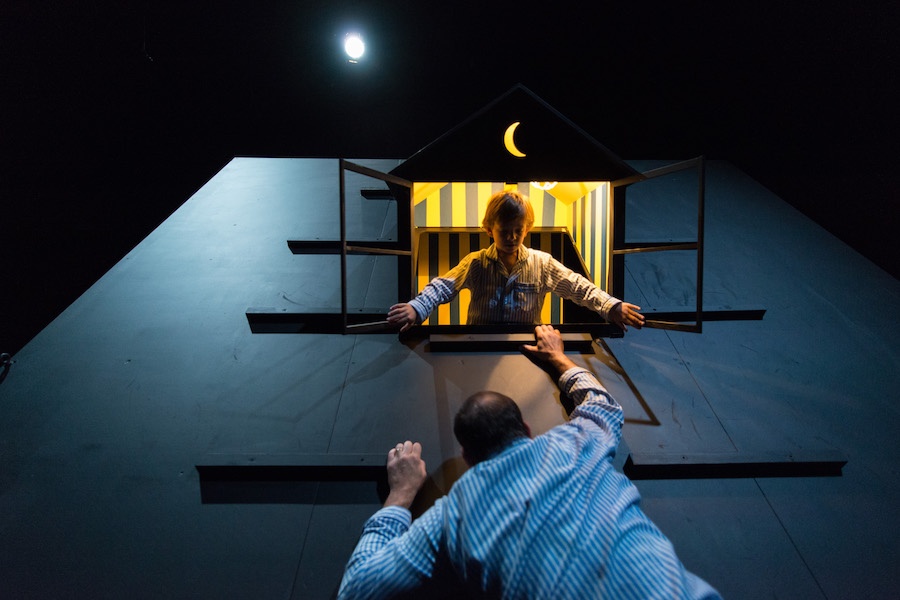 Still from A Billion Nights on Earth. Photo courtesy of the International Festival of Arts & Ideas.
Still from A Billion Nights on Earth. Photo courtesy of the International Festival of Arts & Ideas.
What am I missing? For people who see this and say, it’s still not for me—what are you hoping to say to them with this Festival of Arts & Ideas?
I think with this Festival, like any of our festivals, I would hope that someone would be willing to take a chance. I think the only thing you have to lose is an hour or so of your time. Maybe a little money if it's a ticketed event. But what you have to gain is an opportunity to perhaps see our world a little differently. I’m hoping that this festival helps to have us all ask each other questions. And I’m not expecting this Festival to give us all the answers.
But to be able to sit around with your neighbors, with people that you may or may not know, and ask some serious questions. Whether they’re questions on the performances that you’re seeing or the Ideas conversations, or the walk that you’ve just gone on with Elihu Rubin learning about a building that is falling down ... these are the questions that we need to be challenging ourselves with. If we’re not asking them, who is going to start?
Hopefully, we become the city we need to be. And see a little light.

